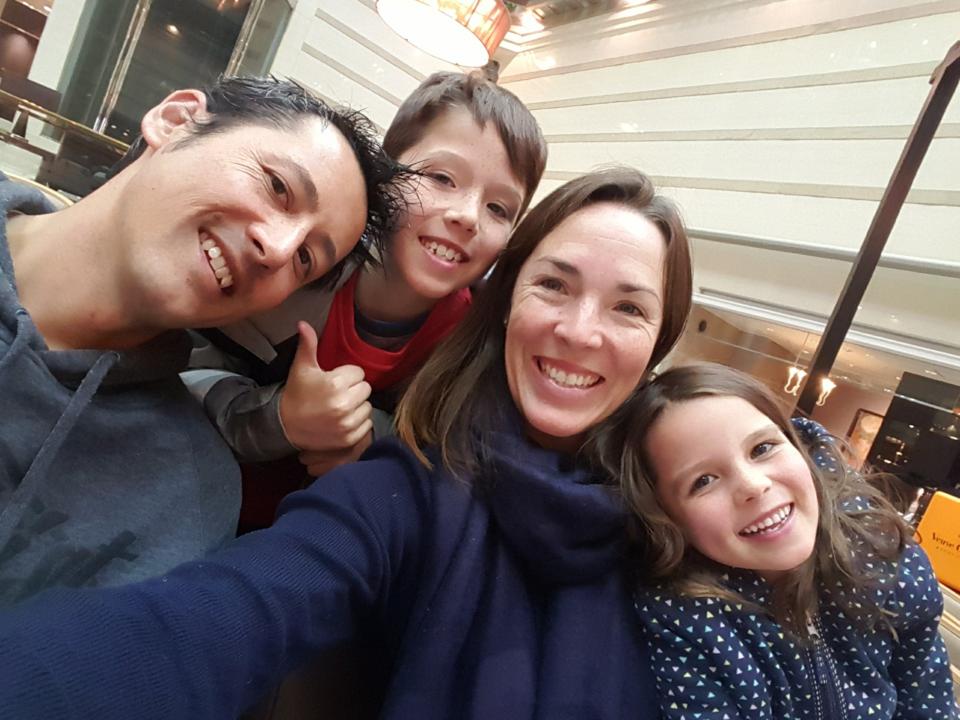I’m standing in a corner of the Hiroshima Peace Memorial Museum, tears rolling down my cheeks.
The woman next to me turns and smiles, a gesture of sympathy. Her eyes are wet too.
In front of me are a few dozen tiny, colourful paper cranes, the work of a girl called Sadako Sasaki.
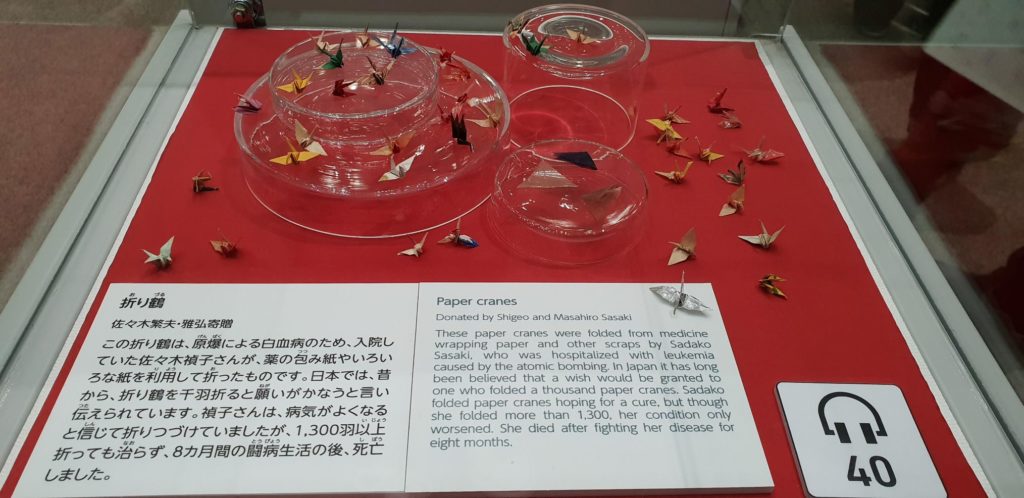
Sadako’s paper cranes at the Hiroshima Peace Memorial Museum. Picture: Alison Godfrey
Sadako was two-years-old when the Americans dropped the atomic bomb on Hiroshima on August 6, 1945. Despite being two-kilometres from the epicentre, Sadako lived through the firey blast that burned the flesh off exposed skin, bubbled paint on tiles and burned the shape of shadows onto walls. Most of her neighbours died, but Sadako didn’t seem to be injured at all.
At least, not on the outside.
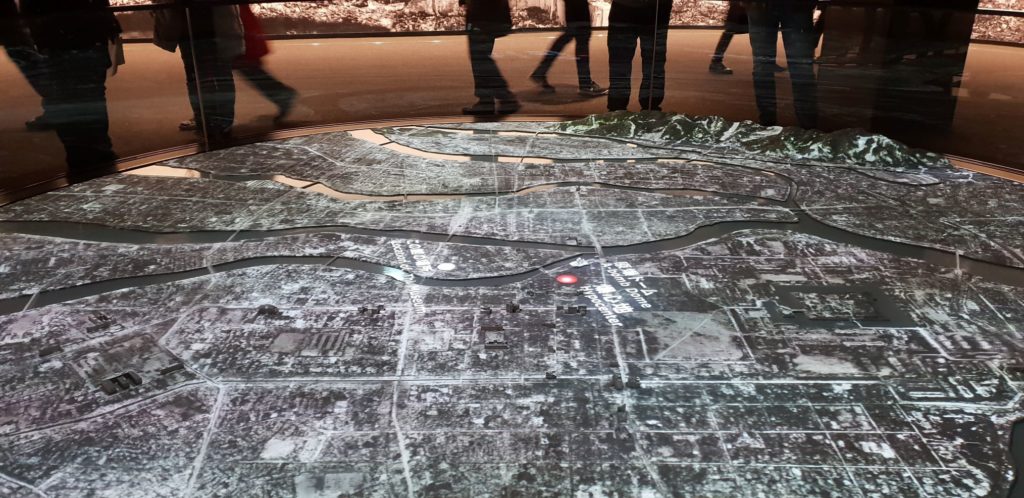
An interactive map at Hiroshima Peace Memorial Museum shows the blast radius. Picture: Alison Godfrey
A decade later Sadako began to feel dizzy. She fell down and struggle to return to her feet.
Her parents took her to the Red Cross hospital where she was diagnosed with leukaemia.
Sadako knew leukaemia was called the bomb disease. She knew no-one survived.
In Japan, it is believed that if a sick person can fold 1000 paper cranes, they will soon get well. Cranes often live to at least 100 years old and are a symbol of long life.
Sadako began to make tiny paper cranes folded from scraps of medical paper she found in the hospital. She folded more than 1500, hoping for a cure.
She died after fighting “bomb disease” for eight months.
This museum is tough. It is thought-provoking, heart-breaking and sobering. It will make you cry. The kids will have big questions. But it also has hope.
When Barack Obama visited the Hiroshima Peace Memorial Museum on May 27, 2016, he folded two paper cranes and placed them alongside a note that read:
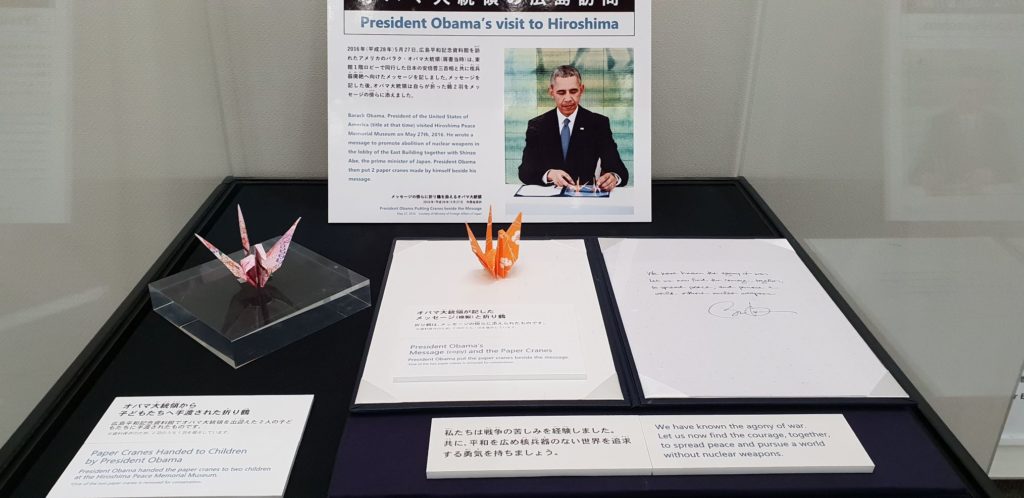
Notes from Barack Obama’s visit to Hiroshima Peace Memorial Museum. Picture: Alison Godfrey
“We have known the agony of war. Let us now find the courage, together to spread peace and pursue a world without nuclear weapons.”
Should you take the kids?
If you’re trying to decide whether to take the kids to the Hiroshima Peace Memorial Museum, remember this is also a place that encourages peace and hope.
You will need to prepare to answer tough questions. The photography and exhibits are more graphic than the Australian War Memorial. Some will shock you.
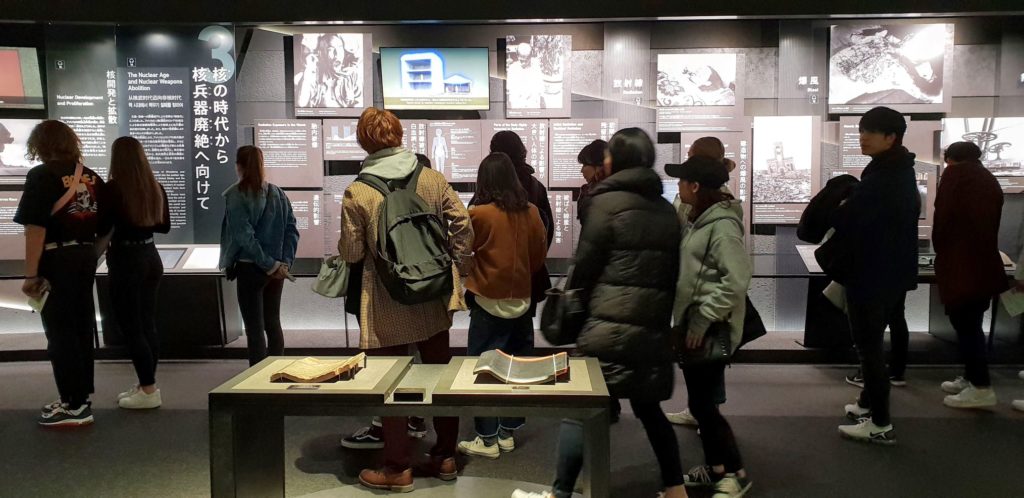
Tourists read the exhibits at the Hiroshima Peace Memorial Museum. Picture: Alison Godfrey
You can see the black rain stains covering an old dress. You can see photographs of the horrific burns suffered in the fire and the gashes caused by debris from the shock waves. You can see the agony and despair in people’s faces and hear video testimony of the day the bomb devastated a community.
But perhaps this is a conversation we need to have. Perhaps it brings “lest we forget” into focus. It makes Anzac Day more relevant. It also brings home the idea that war is not always good versus evil, black versus white. War has grey areas and innocent victims on both sides.
The Hiroshima Peace Memorial Museum also traces the lead up to the bombing. You can see documents that detail how the Americans selected Hiroshima as the target for the bomb knows as “Little Boy”. You can see they wanted “maximum damage”.
The museum also details the aftermath of the Hiroshima and Nagasaki bombings: the arms race, testing around the world including on the Marshall Islands. Sadly it doesn’t mention the British nuclear tests in Australia. But that is worth discussing with the kids. The first floor ends with notes on nuclear non-proliferation treaties – that are now sadly, in doubt.
I called my primary-school aged kids after my visit to the museum and chatted at length about what I had seen. I believe they could handle this museum with adult guidance. Teenagers would be fine. I saw many preschoolers in the museum with their parents. They seemed oblivious to the content. So, yes, you can take kids. But expect to educate them and discuss everything patiently with them.
You need to see the garden
Step outside and into the Peace Park once you have been through the three levels on the museum. This is the best place to wander around and discuss what you have seen. It also brings home this city’s message of peace and non-proliferation.
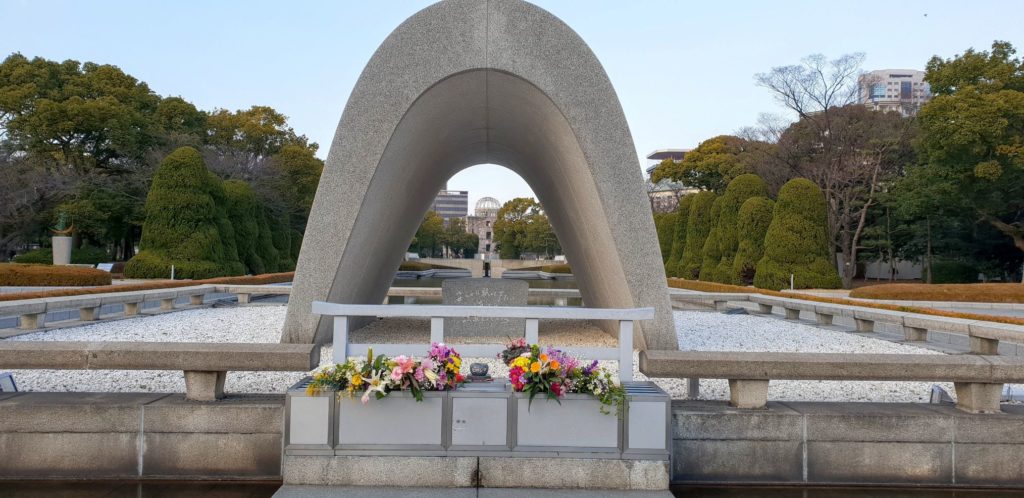
The Cenotaph at the Hiroshima Peace Memorial Museum. Picture: Alison Godfrey
The Cenotaph, to the left of the museum, contains the names of all the victims of the bombing. Thousands more cranes are added every year.
From the Cenotaph you can see the remains of the Hiroshima Prefecture Industrial Promotion Hall and its distinctive burnt-out dome. This building was one of the few to remain standing after the fierce heat of the bomb and the shockwaves that followed.
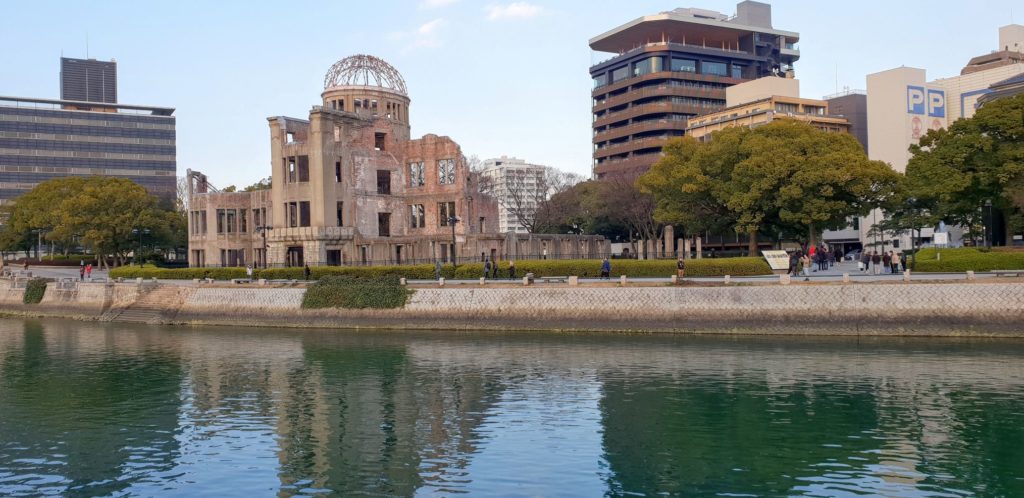
The Hiroshima Prefecture Industrial Promotion Hall. Picture: Alison Godfrey
The Japanese debated knocking the building down. But in the end, they left it there as a reminder, “lest we forget” the horror of war.
Between the hall and the Cenotaph, you’ll find a touching memorial to Sadako – the Children’s Peace Monument. After Sadako died, students from 3100 schools across nine countries raised money to build this statue in her honour. Make sure you take the time to ring the bell. It is inscribed with “A Thousand Paper Cranes” on the front and “Peace on Earth and in Heaven” on the back and the ringer has a beautiful golden crane attached.
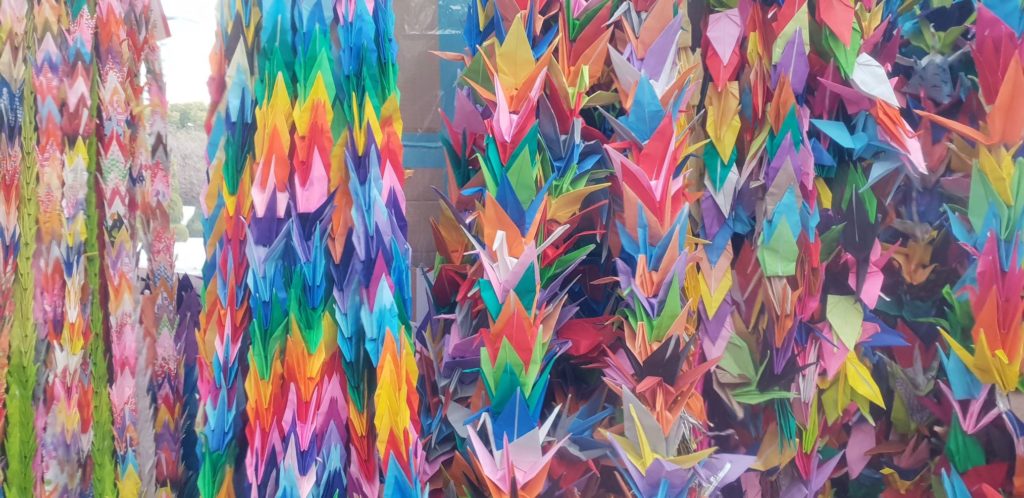
Paper cranes at the Children’s Peace Monument, Hiroshima Peace Memorial Museum. Picture: Alison Godfrey
To this day, children still send paper cranes to be placed at the statue. Many of these can be seen in protected boxes surrounding the monument.
Before you leave the park, find and ring the Peace Bell. But just warning you – it can be loud.
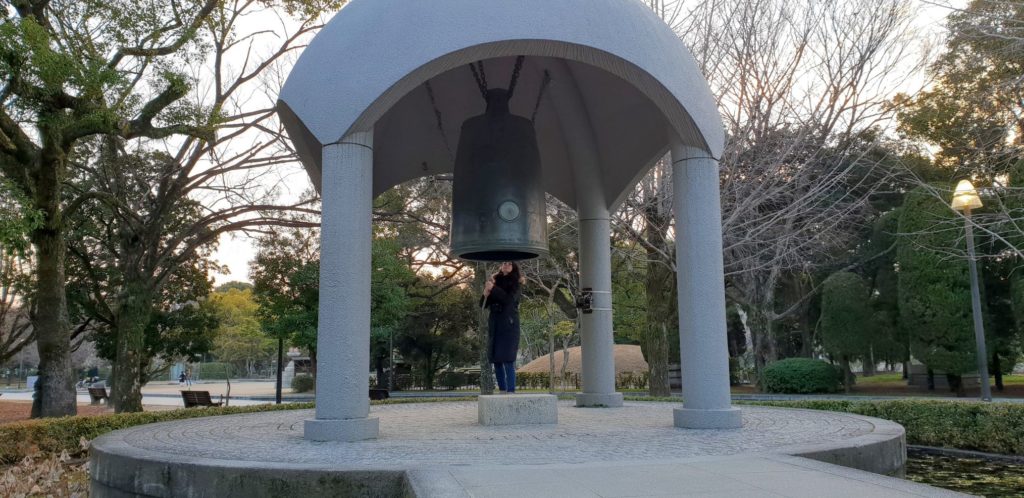
Hiroshima Peace Park, the Peace Bell. Picture: Alison Godfrey
So, should you take the kids to Hiroshima? I say yes. This is not a “fun holiday activity”. But if you do Anzac Day, you can do this. You will learn and discuss so much about the world in the past, in the present and in the future.
Read More:
5 reasons to ski Japan with kids
Where in the world is Harry Potter Wizarding World?

